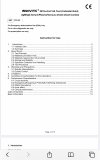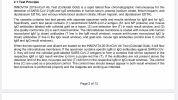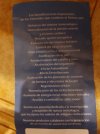In 1942, as a macabre experiment, an officer at Vapniarca started feeding the Jewish inmates bread made from seeds of the grass pea, Lathyrus sativus, a common legume that has been known since the time of Hippocrates to be toxic. “Very quickly,” Hamilton writes in “The Silent Fire,”a Jewish doctor and inmate at the camp, Dr. Arthur Kessler, understood what this implied, particularly when within months, hundreds of the young male inmates of the camp began limping, and had begun to use sticks as crutches to propel themselves about. In some cases inmates had been rapidly reduced to crawling on their backsides to make their ways through the compound …. Once the inmates had ingested enough of the culprit plant, it was as if a silent fire had been lit within their bodies. There was no turning back from this fire—once kindled, it would burn until the person who had eaten the grasspea would ultimately be crippled …. The more they’d eaten, the worse the consequences—but in any case, once the effects had begun, there was simply no way to reverse them …. The disease is called, simply, neurolathyrism, or more commonly, “lathyrism.”
Kessler, who … initially recognized the sinister experiment that had been undertaken at Vapniarca, was one of those who escaped death during those terrible times. He retired to Israel once the war had ended and there established a clinic to care for, study, and attempt to treat the numerous victims of lathyrism from Vapniarca, many of whom had also relocated in Israel.
It’s been estimated that, in the twentieth century, more than a hundred thousand people worldwide were permanently paralyzed from eating grass pea. The injurious substance in the plant turned out to be a neurotoxin, beta-N-oxalyl-L-alpha-beta diaminoproprionic acid, a compound commonly referred to as beta-ODAP or, more often, just ODAP. Curiously, Hamilton reports, ODAP affects different people, different sexes, and even different age groups in different ways. It even affects people within those age groups differently …. The one constant about ODAP poisoning, however, very simply put, is this: those who will be hit the hardest are always young men between the ages of 15 and 25 and who are essentially starving or ingesting very limited calories, who have been engaged in heavy physical activity, and who suffer trace-element shortages from meager, unvaried diets. ODAP was identified in 1964. It brings about paralysis by over-stimulating nerve receptors, causing them to die.
As Hamilton explains, It isn’t clear why, but the most vulnerable neurons to this catastrophic breakdown are the ones that regulate leg movement…. And when sufficient neurons die, paralysis sets in…. [The condition] never gets better; it always gets worse. The signals get weaker and weaker until they simply cease altogether. The victim experiences “much trouble just to stand up.” Many become rapidly too weak to walk. The only thing left for them to do at that point is to crawl….



 .
.

 , but Magnesium, Potassium, Calcium, Iron, Sodium and Zinc. Apparently it is made with sea water which (and I translate directly the leaflet) "was impregnated with subtle information through biomagnetic devices, resonant frequencies at 432hz, and sound massages with Tibetan singing bowls that order its molecular structure". Honestly, to me, it sounds like pure gibberish.
, but Magnesium, Potassium, Calcium, Iron, Sodium and Zinc. Apparently it is made with sea water which (and I translate directly the leaflet) "was impregnated with subtle information through biomagnetic devices, resonant frequencies at 432hz, and sound massages with Tibetan singing bowls that order its molecular structure". Honestly, to me, it sounds like pure gibberish. 


